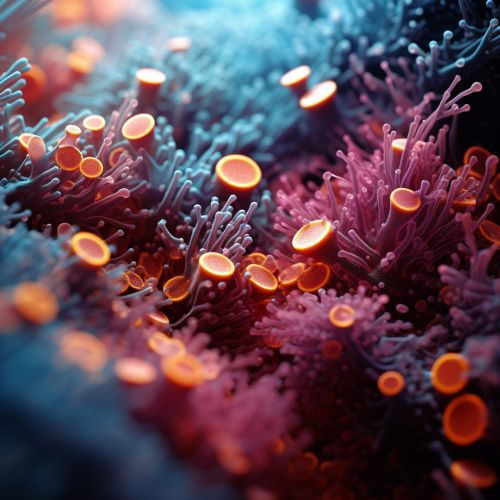Gram-positive bacteria
Introduction
Gram-positive bacteria are a group of bacteria that give a positive result in the Gram stain test, which is traditionally used to quickly classify bacteria into two broad categories. Named after the Danish bacteriologist Hans Christian Gram, who developed the stain, these bacteria are known for their distinct and interesting characteristics.


Characteristics
The main characteristic of Gram-positive bacteria is their thick peptidoglycan cell wall which retains the violet crystal violet stain during the Gram stain process. This differentiates them from Gram-negative bacteria, which have a thinner peptidoglycan layer and do not retain the violet stain.
In addition to the peptidoglycan layer, Gram-positive bacteria also have teichoic acids and lipoteichoic acids. These molecules provide rigidity to the cell wall and are involved in cell growth, division, and pathogenesis.
Classification
Gram-positive bacteria can be classified into several groups based on their morphology and other characteristics. The two main groups are the Firmicutes and the Actinobacteria.
The Firmicutes are a phylum of bacteria, most of which have Gram-positive cell wall structure. They include many well-known genera such as Bacillus, Listeria, Staphylococcus, Streptococcus, Enterococcus, and Clostridium.
The Actinobacteria are a group of Gram-positive bacteria with high guanine and cytosine content in their DNA. They include the genera Mycobacterium, Actinomyces, Nocardia, and Corynebacterium.
Pathogenesis
Many Gram-positive bacteria are pathogenic, meaning they can cause disease in humans or other organisms. The diseases they cause range from mild skin infections to life-threatening conditions such as pneumonia, meningitis, and toxic shock syndrome.
The pathogenicity of Gram-positive bacteria is often related to their ability to produce toxins. For example, Staphylococcus aureus produces several toxins, including enterotoxins that cause food poisoning and exfoliative toxins that cause scalded skin syndrome.
Antibiotic Resistance
Antibiotic resistance is a significant concern with Gram-positive bacteria. Many strains have developed resistance to commonly used antibiotics, leading to increased morbidity and mortality. Methicillin-resistant Staphylococcus aureus (MRSA) and vancomycin-resistant Enterococcus (VRE) are two examples of highly drug-resistant Gram-positive bacteria.
Conclusion
Gram-positive bacteria are a diverse group of organisms with a wide range of characteristics and behaviors. They play crucial roles in our environment and health, both as beneficial organisms and as pathogens. Understanding these bacteria is essential for developing effective treatments for the diseases they cause and for harnessing their potential benefits.
